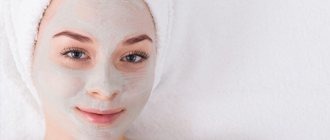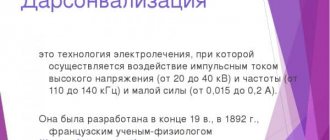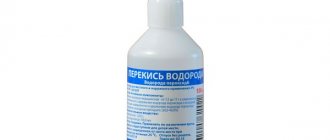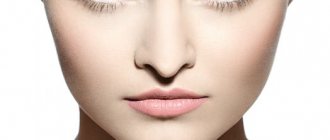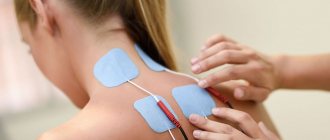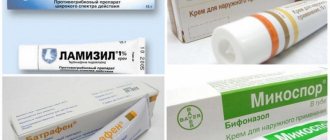Acne (lat. acne) is a chronic, genetically determined skin disease, the occurrence of which is usually associated with two main factors: disruption of the sebaceous glands, which produce excess sebum in response to stimulation by hormones (androgens), and follicular hyperkeratosis (increased number of dead cells in and around the follicle). The activity of microorganisms and the inflammatory reaction of tissues play an important role in the development of the disease. Usually, several factors are present, which together lead to the appearance of non-inflammatory and inflammatory elements on the skin.
Most often, acne affects the skin of the face (forehead, nose, cheeks, chin) and scalp, but it can also spread to some areas of the body (shoulders, back, décolleté).
Increased sebum secretion occurs due to the fault of the male sex hormone - testosterone (a certain amount of which is also present in the female body). Under the action of the enzyme 5-alpha reductase, testosterone is converted to dihydrotestosterone, which stimulates increased sebum production. This is why the problem of acne is typical for the vast majority of adolescents during puberty. And for the same reason, women may experience small rashes before menstruation, since progesterone, which has androgenic and antiestrogenic properties, is especially active during this phase of the cycle. Also, doctors often encounter the problem of female “adult acne”, when this disease appears after 45 years, in perimenopause, since during this period, against the background of a decrease in estrogen, the level of androgens compensatory increases.
Pathological changes in the functioning of the sebaceous glands affect not only the volume of sebum, or sebum, increasing it, but also its composition (sebum dilutes, and its pH changes towards alkaline, the antibacterial properties of sebum decrease). That is, under the influence of excess testosterone, the skin begins to produce too much sebum (with less pronounced antibacterial properties). The fat mixes with keratinized skin particles and clogs the mouth of the sebaceous gland. There, an ideal environment is created for the proliferation of anaerobic bacteria (for example, Propionibacterium acnes, Propionibacterium granulosum, staphylococci, yeast-like fungi), and the biological substances they secrete through the destroyed gland wall provoke inflammation directly in the dermis.
So, we can note the following conditions for the development of acne, often influencing each other: increased secretion of the sebaceous glands, follicular hyperkeratosis (thickening of the stratum corneum), the activity of bacteria inside the clogged sebaceous gland and the inflammatory reaction of the skin to the activity of bacteria.
Among the factors contributing to the appearance of this problem are usually called: hormonal imbalance, vitamin A deficiency (provoking hyperkeratosis), stress, improper skin care (insufficient or excessive, when the skin is constantly dry, this is caused by the abuse of tonics and alcohol tinctures, stimulating even more high production of sebum and causing irritation), comedogenic cosmetics, unsuitable climate, self-squeezing of pimples.
Acne is called acne, but minor rashes in the form of a few pimples during a period of hormonal changes or due to disruption of the normal rhythm of life are not a disease. But, as a rule, people turn to a doctor when acne has been progressing for a long time and irreversible changes in the tissues have occurred.
Doctors strongly advise parents not to ignore acne in their teenagers but to treat it immediately. If left unattended, acne can lead to much worse consequences than if it were dealt with in a timely manner. Without special treatment and care, the disease risks developing into a more complex form, dragging on over time and leading to severe post-acne (scars, depressions and irregularities). As practice shows, the longer the skin has been affected by acne, the more pronounced the consequences of acne are then observed, which, by the way, are not always easy to correct.
As a rule, the fight against acne and post-acne is a serious and long-term work that requires a competent, comprehensive approach.
Types and severity of acne
Acne rashes vary in appearance, method of occurrence, and severity.
Comedones are black or white dots on the skin, formed due to the gradual clogging of pores with the secretion of the sebaceous glands, mixed with keratinized skin particles and impurities. A white comedon is a plug that is located under the skin. A blackhead is an open comedon (the plug has reached the surface of the skin, broken through and oxidized).
Papules are red bumps on the skin, usually called pimples. These are small inflammatory elements that disappear after some time or turn into a pustule.
Pustules are red bumps inside of which pus has formed due to inflammation.
Nodules are larger, more painful lumps under the skin that look like large papules.
Cysts are very large pustules (dense to the touch), inside which the process of pus formation also occurs.
Often, after the skin has healed, pigment spots or scars form at the site of large rashes (nodules, cysts).
Common (adolescent) acne occurs during puberty and affects mainly the skin of the face, chest, back, and shoulders (as a rule, comedones, papules, pustules, nodules, and sometimes cysts are present among them). Red or rosacea occur most often in women over 40 years of age and are a certain stage in the development of rosacea; pink nodules are often adjacent to spider veins (telangiectasia). Occupational acne occurs as a result of contact with chemicals and compounds that clog pores (tar, lubricating oils, chlorine, etc.). Medicinal acne becomes a side effect of taking iodide, bromide, hormonal and other medications.
Acne comes in varying degrees of severity:
- I degree: the presence of closed comedones, the absence of inflamed nodules and pustules;
- II degree: there are open and closed comedones, there are inflamed seals (nodules) and single pustules (up to 20 elements);
- III degree: from 20 to 40 fairly large inflammatory elements (nodules, pustules);
- IV degree: over 40 noticeable inflammatory elements.
After acne, formations are often observed on the skin, which in cosmetology are called “post-acne”.
Main types of post-acne
Scars are formed after inflammatory processes that affect fairly deep layers of the skin and are often accompanied by complex and long-term removal of pus to the surface (under such conditions, areas of the skin affected by prolonged inflammation have time to deform). Scars are also often the result of independent attempts to “eliminate” pimples by squeezing them out. Scars are normotrophic (normal structure), atrophic (with a resulting tissue deficiency, look like depressions in the skin) and hypertrophic (rising above the surface of the skin). All types of scars may differ from the main skin color (be lighter or darker).
Atrophic scars affect the epidermis and papillary layer of the dermis, and hypertrophic and keloid scars are formed due to inflammation of the reticular layer of the dermis and are chipped, rectangular, and rounded in shape.
Acne is characterized by retracted or “chipped” scars (ice-pick scars, which resemble a chip in appearance). Typically, such scars are small, up to 2 mm in diameter. Sometimes they look like deep pits with steeply sloping walls. When the skin is stretched, soft scars are smoothed out, but hard scars are not. Chipped scars can change in size, increasing and turning into depressed fibrotic - rounded and larger pits with vertical non-converging walls. Superficial scars have a depth of 0.1–0.5 mm, deep ones - over 0.5 mm. Retracted or depressed scars are sometimes compared to punched-out scars. Depressed scars can have a rounded shape (rolled scar), rounded or oblong outlines, they are soft to the touch, their walls smoothly transition to the main level of the skin.
Vascular spots (dyschromia) occur after disruption of normal microcirculation in these areas of the skin and unsuccessful attempts to squeeze out pimples. They have different colors: burgundy, crimson, bluish. Telangiectasia may also appear on inflamed skin.
Pathogenesis
Acne formation:
- Increased hypersecretion of sebum.
- Increase in sebum levels.
- Formation of follicular hyperkeratosis. Formation of growth of horny epithelium in places where hair follicles accumulate. Severe inflammatory process of blackheads.
- Active stage of propyonibacterium acnes propagation. Subcutaneous fat is the habitat and development of bacteria and infections.
A pronounced inflammatory process of internal and external action.
Acne treatment and post-acne correction
Depending on the severity of acne, the dermatologist-cosmetologist prescribes both the necessary examinations, including with the help of doctors of other specialties (for example, for women, a gynecologist’s report is required) and therapy. It is possible that to treat acne you will only need local medications (antibacterial gels, ointments, creams, topical (local) retinoids, peeling medications, etc.), but systemic therapy with retinoids, antibiotics, hormones, a special diet, and lifestyle changes may also be required. etc. Hardware procedures can be prescribed as an auxiliary method. In any case, acne treatment is a long and serious process, taking at least six months.
Omar Garunovich Isaev, dermatologist, trichologist, leading specialist at the Body Aesthetics clinic:
“The course of acne is often aggravated by disturbed intestinal flora (dysbacteriosis) and by excessive consumption of carbohydrates. As a result of dysbiosis, food in the intestines is not completely broken down and a large number of toxins enter the bloodstream, which are eliminated through the skin, aggravating inflammation. With an excess of carbohydrates in the intestines, the amount of beneficial flora decreases and at the same time the amount of opportunistic flora increases.”
If a patient with post-acne comes to the office of a dermatocosmetologist, then hardware procedures will most likely be the main (although not the only) method of correction. And success in post-acne correction will largely depend on the correctness of the selected cumulative methods, as well as on the stage of treatment. Unfortunately, long-standing post-acne lesions are extremely difficult to correct and sometimes require several seasons of cumulative procedures to achieve any significant results.
Acne treatment involves performing the following tasks:
- relieving inflammation;
- decreased activity of the sebaceous glands;
- inhibition (suppression of activity) of bacteria that provoke inflammation;
- normalization of vital processes in skin cells;
- elimination of hyperkeratosis.
For these purposes the following is used:
- lasers: therapeutic,
- neodymium;
Post-acne correction involves performing the following tasks:
- elimination of post-acne scars, smoothing skin texture;
- elimination of hyperpigmentation (even out skin tone);
- improvement of tissue trophism.
For this use:
- lasers: CO2,
- erbium;
Microcurrents can also be used as an auxiliary procedure; they can be used to correct fresh post-acne scars, improving tissue trophism.
Lasers
Let us recall that the term “laser” means “amplification of light using induced (stimulated) radiation” (derives from the English Light Amplification by Stimulated Emission of Radiation). A laser is a source of electromagnetic radiation in the optical range. The laser device includes three main elements: the working fluid (active medium), the energy activation system (the “pumping” mechanism) and the mirror system (optical cavity). Laser radiation has the following characteristics: monochromaticity, high density and orderliness of the energy flow. Today, lasers are used to solve a wide range of skin problems, treat various skin diseases, and correct aesthetic imperfections.
When treating acne with laser, one strives to achieve the following effects:
- anti-inflammatory (increased microcirculation, decreased prostaglandin levels);
- reparative (activation of cell metabolism, increased proliferation of fibroblasts, protein and collagen synthesis to reduce the likelihood of post-acne scar formation);
- immunomodulatory.
It has proven itself well in the treatment of acne LILI (low-intensity laser radiation), which is used in therapeutic lasers. The effect of LILI is to activate cell membrane enzymes and stabilize lipids. LILI stimulates cell division and development at a subtle, atomic-molecular level, where energy is absorbed under the influence of laser radiation of a certain frequency (red and infrared ranges). This energy absorption leads to a sharp increase in the intracellular concentration of Ca2+, that is, the accumulation and release of ATP is activated, cell membranes are restored, intracellular metabolism is increased, and regenerative processes are enhanced due to the activation of cell division.
With the help of LILI (therapeutic infrared lasers) for the treatment of acne, laser phoresis procedures are carried out (in addition to other treatments), which allow you to quickly achieve results: reduce the number of inflammatory elements on the skin, comedones, and “dissolve” infiltrates. It is also important that procedures using therapeutic lasers, due to their low intensity, are painless and comfortable for the patient: the maximum wavelength in therapeutic lasers is 1300 nm, and the intensity is 0.1–10 W/cm2. The course of laser therapy for treating acne with such lasers is about 10 procedures with a frequency of 1–2 times a week.
The basic package of therapeutic lasers ( solid-state semiconductor (diode) lasers ) includes a device combined with a control panel (sometimes in the form of a touch display) and emitter handpieces. Therapeutic lasers have small dimensions, low energy consumption and the ability to install the working fluid directly in the handpiece, without the use of a light guide instrument for radiation delivery.
Also in the treatment of acne in order to reduce papulopustular rashes and prevent the appearance of new ones, relieve inflammation, a neodymium laser - a solid-state laser, the working fluid (or active medium) of which is yttrium aluminum garnet doped with neodymium ions.
The laser has different wavelengths (1064 nm, 1320 nm and 1450 nm); When treating acne, the use of a neodymium laser with a wavelength of 1064 nm, which is in the invisible region of the near-infrared spectrum, is considered optimal. The procedure is based on the method of homogeneous photothermolysis, that is, laser energy acts on several targets at once, distributed between them in certain proportions. The neodymium beam is absorbed proportionally by five chromophores at once (deoxyhemoglobin, oxyhemoglobin, protein, water (15% absorption) and melanin (10%)). The impact is made to a depth of up to 6 mm. Direct sterilization of inflammation foci occurs: the bactericidal effect is not only on P. acnes, but also on any microorganisms in the affected area. Due to the coagulation of blood vessels, microcirculation in the area of inflammation is normalized, and thanks to improved circulation, trophic processes in tissues are stimulated. During the procedure, the sebaceous glands are also affected, which helps reduce sebum production.
The effectiveness of treatment is assessed the next day after the procedure, and a decrease in the severity of inflammation is checked. Neodymium laser treatment is suitable for any form of acne and any severity of the disease. Existing papules and pustules are opened before the procedure. The number of treatments depends on the degree of skin damage, but on average, after 2-4 treatments with a neodymium laser, the number of skin rashes can decrease by 80 percent, with no risk of scars or age spots. In severe forms of acne, the course can be re-prescribed (after three to five days).
To get rid of post-acne scars, both local and occupying a fairly large area (sometimes almost the entire facial skin is scar tissue after severe forms of acne), the method of laser fractional ablation is used (a process of targeted, controlled removal of some part of biological tissue using laser beam to the full depth of its penetration). It can only be performed using high-intensity laser radiation (HILI).
, an erbium laser with a wavelength of 2940 nm and a CO2 laser (its wavelength is 10.6 microns) are used for the ablation effect The latter is especially popular for this procedure. The target (or chromophore) for fractional ablative lasers is the water contained in skin cells.
Today, exclusively fractional exposure is used, the method of so-called ablative fractional photothermolysis: in the process of laser resurfacing (this is the name of the procedure for correcting cicatricial changes in the skin, including post-acne), the laser beam forms “columns” (ablation microzones, around which a coagulation zone appears), perpendicular to the skin surface, to a depth of 20 microns. This is how the skin area is reduced, the dermal framework is reorganized (new, young collagen is produced) and the skin is renewed, improving its appearance and properties (smoothing the relief, reducing pores, etc.). Fractional photothermolysis can be superficial or deep: deep photothermolysis is suitable for polishing post-acne scars, since it allows you to work not only in the papillary, but also in the reticular layer of the dermis (the diameter of the microzone of damage should not exceed 500 microns). Correcting post-acne scars usually requires not one procedure, but a course of several laser resurfacing procedures (depending on the severity of the problem).
As already mentioned, fractional ablation is performed using carbon dioxide and erbium lasers. In a CO2 laser, the active medium is a mixture of atmospheric gases, in which carbon dioxide plays the main role. This laser generates radiation with a wavelength of 10,600 nm, which corresponds to the far infrared range. The specificity of the carbon dioxide laser is the deepest heating of tissues with the largest coagulation zone compared to other ablative lasers, especially compared to erbium lasers. The CO2 laser has a pronounced hemostatic (hemostatic) effect (weakly expressed in the ablative erbium laser). An erbium laser, whose active medium is erbium:yttrium-aluminum-garnet, has several wavelengths. For ablative procedures, a laser with a wavelength of 2940 nm is used. It is at this depth that peak absorption of laser energy occurs in water, which instantly evaporates without having time to transfer heat to the surrounding tissues (which is why the coagulation effect is minimal here).
The following difference is noted in the use of these two lasers for resurfacing procedures (both for the purpose of post-acne correction and skin rejuvenation): you can expect that with an erbium laser skin restoration will occur faster, but a carbon dioxide laser is likely to provide a more pronounced effect. In addition, the coagulation processes triggered by the action of the CO2 laser will stimulate the work of fibroblasts and activate biologically active molecules, so you can count on a prolonged improvement in skin quality after the procedure.
Fractional radiofrequency exposure
The method of fractional radiofrequency exposure is used both for the treatment of acne (but not in the acute phase, when the patient has a large number of inflammatory elements) and for the correction of post-acne (the greatest effect is achieved with fresh, not old scars).
The essence of the radiofrequency method is as follows: alternating electric current in the radio frequency range (pulse frequency can range from 0.4 to 9 MHz) affects tissue, electrical energy is converted into heat and metabolic reactions are activated in cells.
When the dermis is heated (to approximately 42 °C), old collagen is damaged, its fibers shrink and thicken, thereby producing a lifting effect. At the same time, powerful stimulation of fibroblasts activates the synthesis of new collagen and elastin, ensuring the gradual formation of a new subcutaneous framework, that is, skin smoothing. During the procedure, local blood supply and lymph flow improves, vascular tone increases. Restoration of microcirculation ensures normal respiration and nutrition of cells. In general, all these processes lead to the reorganization of the dermis and improvement of the condition of the skin, enhance its protective properties and accelerate the healing of skin rashes, preventing the appearance of new inflammatory elements.
Fractional RF is a device with an attachment, which is a bipolar or multipolar radiofrequency device with a needle applicator tip. The number of electrode needles made of metal depends on the purpose of the nozzle and the area for which it is intended to be processed. Small tips are used for small areas of skin, such as the bridge of the nose or temples. Microneedles can range in size from 0.2–3.5 mm. Through micro-holes, needles penetrate the skin and deliver energy to the required depth. Several zones of thermal action are formed around each needle electrode, from evaporation to thermal dermal stimulation. This ensures a reduction in the skin flap with a subsequent increase in collagen production. Silicone-coated electrodes deliver current from the bare end of the needle, rather than across its entire surface, this allows radiofrequency energy to be directly delivered into the dermis and partially into the subcutaneous fat space, bypassing the epidermis, which makes it possible to damage deeper layers of the skin without ablation of its surface.
Contraindications to manual facial cleansing
Despite the fact that manual skin cleansing has proven itself to be a safe, painless procedure, it still has its limitations, which cannot be ignored. To identify contraindications, before manipulation, the cosmetologist conducts a thorough external examination, collects anamnesis, and asks about disturbing symptoms.
Manual cleaning is contraindicated for patients diagnosed with the following pathologies and disorders:
- viral and chronic skin diseases;
- profuse acne, accompanied by severe inflammation, suppuration, hyperemia;
- thinned, very dry skin;
- fragile vessels;
- phlebeurysm;
- thrombophlebitis;
- chronic arterial hypertension;
- rosacea;
- demodicosis - damage to the skin by the microscopic Demodex mite;
- allergic rashes;
- critical days;
- diseases of the hematopoietic system;
- acute cardiac, pulmonary, renal failure;
- oncological neoplasms of any location;
- severe mental disorders accompanied by uncontrollable attacks and seizures.
IPL method (exposure to broadband intense pulsed light)
The term IPL is an abbreviation for the English Intense Pulsed Light and translates as “intense pulsed light”. This name is today used to refer to the method underlying photographic procedures using any equipment of this type.
The effectiveness of phototherapy in the treatment of acne is explained by the following: the light energy (405–420 nm) generated by IPL devices is perfectly absorbed by pigments of the porphyrin class, which are products of the vital activity of the bacterium Propionbacterium acnes (P. acnes), one of the main culprits in the appearance of inflammatory processes in acne. Then the irradiated porphyrins enter into a chemical interaction with the bacterium that gave birth to them and destroy it.
Another valuable effect of broadband pulsed light devices already applies to the upper range of the range (800–1200 nm): this part of the infrared spectrum radiation has a thermal effect on the sebaceous glands, reducing sebum production. In addition, broadband pulsed light provides an anti-inflammatory effect.
The result of a course of IPL procedures for acne will be a reduction in skin inflammation, sebum secretion, pore diameter, hyperpigmentation, increased exfoliation of dead cells, etc. The IPL procedure can be quite noticeable and cause a burning sensation (some devices have an additional cooling system for greater client comfort ), it lasts 3–10 minutes (depending on the affected area). In accordance with the indications, a course of two to six procedures is usually prescribed.
The source of broadband intense pulsed light is a xenon lamp, which is an electric arc placed in a sealed container filled with xenon gas. Lamp flashes provide a light effect on the skin, allowing you to obtain a certain effect: skin rejuvenation, treatment of some of its diseases, including acne, removal of unwanted hair. The ultraviolet present in the emission spectrum of a xenon lamp is “cut off” using special filters, leaving only the required range, from 400 to 1200 nm. Here, as when working with a laser, light energy is selectively absorbed by chromophores, which are exposed to electromagnetic waves of a certain length.
The two main chromophores for IPL radiation are hemoglobin (by acting on it, we get the effect of skin rejuvenation and elimination of vascular disorders) and melanin (it is the target in the fight against pigmentation and removal of unwanted hair).
The broadband pulsed light method is also considered one of the most effective in the treatment of vascular disorders, including those caused by inflammatory processes in acne. A set of procedures helps reduce skin reactivity and eliminate irritation, normalize skin color.
Causes
Acne is an inflammatory process characterized by disease of the sebaceous glands and hair follicles. The skin has three layers:
- upper – epidermis;
- middle – dermis;
- lower – hypodermis.
Epidermis - contains 2 layers. The upper one is horny, contains dead cells, provides a protective reaction.
Dermis is the layer of skin. Provides life support. Intertwined with blood vessels and nerve endings. The work is carried out for visualization, the production of fibroblasts. Sebaceous and sweat glands, hair follicles are located.
The hypodermis contains loose connective tissue and subcutaneous fat cells. The thickness depends on the location on the body.
The uninterrupted operation of the sebaceous glands produces subcutaneous sebum - the shine of the skin in the frontal area, nose, and chin. Hormone dependent. Subcutaneous sebum production is accompanied by multi-level control:
- hypothalamus;
- pituitary gland
Adrenal cortex and gonads.
Acne treatment and post-acne correction procedures using plasma therapy
Plasma is a gas consisting of neutral molecules and charged particles. Plasma is formed in an electrical discharge (arc, spark, smoldering and others); combustion and explosion processes also lead to its formation. Plasma used for cosmetic purposes is obtained by creating an electromagnetic field.
Procedures using plasma can be part of acne therapy, used to correct scar tissue and remove post-acne pigment. They are characterized by high efficiency, minimal damage to the skin, short rehabilitation, and an affordable price.
In cosmetology, as a rule, two types of plasma devices are used. The first, including chronologically, is designed so that the plasma is formed inside the nozzle (plasma jet). Nitrogen (and some other types of inert gases) are used here as a plasma-forming gas. In the handle of the device, under the influence of ultra-high-frequency electric current, nitrogen molecules are ionized, and at the output, a plasma beam penetrates the skin through millisecond pulses. Another type of plasma equipment involves the formation of plasma between the electrode and the surface of the skin (dielectric barrier discharge). Here, the role of ionized neutral gas is played by ordinary air (a mixture of atmospheric gases), which forms a natural layer between the surface of the skin and the nozzle. There is an electrode at the tip of the nozzle. When the doctor gives a pulse, a plasma arc is formed between the needle tip (electrode) and the skin, which penetrates the skin and forms a crater in it, evaporating the microzone without heating the surrounding tissue. Both methods are non-contact, since the electrode is located at a distance of 0.5–1 mm from the skin.
Plasma is conventionally divided into high- and low-energy; often one device can have attachments for working with both types of plasma. High-energy plasma is used to correct scars and pigment. For procedures, a single electrode tip (surgical tip) is used to sublimate tissue. For antibacterial treatment of the skin in the treatment of acne, as well as to improve its general properties (reducing hypersensitivity, stimulating the production of collagen and elastin), low-energy plasma and, accordingly, a “plasma shower” attachment are used to activate the transdermal delivery system of drugs and cosmetics into the skin. (or “plasma jets”): it has a larger diameter and is equipped with multiple electrodes, allowing it to work with a larger area of skin. The plasma shower head can be used for stand-alone procedures (for example, for antibacterial skin treatment) or as part of a treatment protocol.
Comprehensive skin care
Effective moisturizing and cleansing is an integral part of caring for every type of face. Consequences:
- rapid removal of scales from problem areas;
- reduction of excess subcutaneous natural fat;
- rapid exfoliation of dead cells;
- treatment with disinfectants;
- ensuring protection of the skin from excessive drying.
Comprehensive cleaning is carried out:
- using special emulsions;
- use of medicinal solutions;
- selection of soap consistency;
- use of cosmetics to care for problem skin.
Everyday cleaning is carried out with active ingredients without alkaline substances or alcohol. Eliminates the rapid destruction of the pH balance and microflora of the patient’s body.
Effective moisturizing significantly reduces the process of evaporation of water balance from the subcutaneous layer. For patients with signs of a chronic disease, moisturizing active ingredients are recommended in the form of: cream, emulsion, hydrogel.
Mild and moderate forms of pathology force a reduction in the total volume of comedones, a pronounced inflammatory process, and a decrease in horny compaction. An experienced dermatologist prescribes sebum-keratoregulating components characterized by keratolytic and anti-inflammatory effects.
Microdermabrasion (mechanical peeling)
This hardware method is one of the methods for resurfacing skin with post-acne scars, although today it is much less popular than, for example, laser dermabrasion (resurfacing), since it affects only the superficial layers of the skin.
In the process of microcrystalline dermabrasion, a device nozzle is placed on an area of \u200b\u200bthe skin with an area of \u200b\u200b1 cm2, in which there is a chamber with two holes: from one, a stream of air containing microcrystals (for example, aluminum oxide/corundum) is supplied under pressure, and in the other a vacuum is created. As a result, microcrystals hit the surface of the skin at high speed and mechanically remove epidermal cells, while the mixture of crystals and removed cells is sucked into a special container by vacuum. The impact affects only the superficial layers of the skin; during the procedure, complete or partial removal of the epidermis occurs, followed by its regeneration. The depth of impact depends on the rate of release of microcrystals, which is determined by the speed of movement of the tip, the number of passes over the same area, and the patient’s skin type.
To achieve the effect, a series of procedures (from 2 to 12) is usually carried out once a week. The more pronounced the skin defect, the more sessions are required.
Microcurrent therapy
Microcurrent therapy uses a modulated pulse current of ultra-low amplitude (strength), from 0 to 1000 μA, and a frequency from 0.1 to 500 Hz. Cells are activated by affecting their membrane potential (the difference in electrical potential that occurs between the charges on the inside and outside of the cell membrane). Microcurrents correct the pathologically altered membrane potential of damaged cells, and this normalizes the selective passage of ions through the membrane through ion channels from the cell to the external environment and back. In this way, a number of processes in the cell are normalized, such as the synthesis of ATP (adenosine triphosphate, which is a universal source of energy for all biochemical processes occurring in living systems), maintaining a constant ionic composition and water content.
A distinctive feature of microcurrent therapy is its ability to simultaneously influence the epidermis, dermis, subcutaneous fat, lymphatic and blood vessels, facial muscles, and indirectly, working at the cellular level. By optimizing the vital processes of cells, microcurrents restore the functional activity of tissues. There is a mild and physiological effect with minimal contraindications, and this allows the technique to be used to solve a wide range of problems.
Microcurrents change the tone of the vascular wall, increasing blood circulation, improving lymph flow and trophism (nutrition) of tissues, promoting the removal of intercellular fluid, resulting in a decrease in skin swelling, inflammation, and the likelihood of rosacea.
Microcurrents can be included in an acne treatment program as an adjuvant, but not for the correction of acne in the active phase. Using this method, you can eliminate fresh post-acne scars by improving tissue trophism. Microcurrent therapy is perfectly combined with other methods of acne and post-acne correction (for example, laser resurfacing), which together gives an excellent result.
Prevention
Elimination of provoking factors for the development of a chronic disease and the spread of provoking abnormalities is an integral part of:
- active insolation indicators;
- unbalanced regular diet;
- squeezing out pimples, introducing infections and bacteria.
Immediate contact with an experienced dermatologist in case of primary symptoms is an effective step to solve the problem. Quick correction of the organization of home care for the skin, the correct selection of medications. Prescription of mechanical and chemical peeling. Prescribing an effective rehabilitation period, vitamin complex, massage, additional procedures. Rapid relief of the inflammatory process, stimulation of the regeneration function of damaged cells, strengthening of the structure.
Thermomechanoablation method
This is a new fractional method, which is based on mechanical action on the skin with a metal matrix (made of titanium alloy) heated to high temperatures. The surface of the matrix is a group of “pyramids”, evenly distributed over an area of 9x9 mm2, having a height of 1.25 mm and a radius of 100 microns (at the highest point). The matrix is heated to 400 °C, and its surface is applied to the surface of the skin: there is a short contact of the matrix with the skin (for only a few milliseconds), as a result of which the tissues are heated to a controlled depth. The application time and the depth of exposure are adjusted depending on the goals of the cosmetologist (you can influence a depth from 100 to 1000 microns in increments of 100 microns).
The technique involves the use of different modes: ablative (impact depth – 600–1000 µm, duration – 14 ms), non-ablative (depth – 500 µm, duration – 12 ms) and non-injection mesotherapy mode (200 µm/5 ms – 400 µm/8 ms ). In the ablative mode, which is used both for the treatment of acne (destroying bacteria that provoke its development) and for the correction of post-acne (evaporating the upper layers of the skin and gradually smoothing its surface, providing a peeling effect), ablation microzones are formed in the stratum corneum. During this procedure, ablation does not affect the dermis, so the method is considered gentle and safe. With ablative and non-ablative modes, an effect similar to the effect of an erbium laser also occurs: heat is transferred to the papillary layer of the dermis and, due to this, the production of new collagen is stimulated, which contributes to the renewal of the intercellular matrix.
